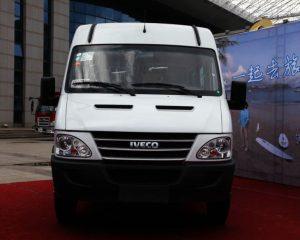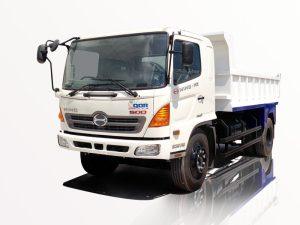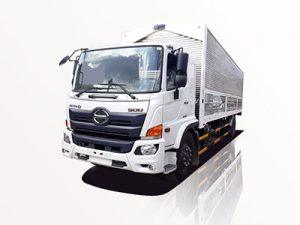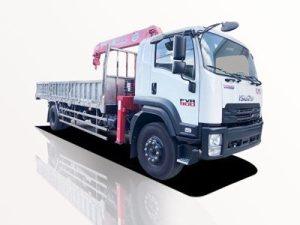Monday to Saturday - 8:00 -17:30
Electric Powered Trucks: The Future of Sustainable Transportation
Introduction
As the world shifts towards greener alternatives, electric powered trucks stand at the forefront of this evolution in transportation. With advancements in technology and growing environmental concerns, electric trucks are emerging as a viable solution for both businesses and consumers. This article explores everything you need to know about electric powered trucks, including their benefits, challenges, examples from the industry, and a look into the future of electric logistics.
Understanding Electric Powered Trucks
What are Electric Powered Trucks?
Electric powered trucks are commercial vehicles that use electric motors and batteries for propulsion instead of traditional internal combustion engines (ICE). These trucks can vary in size and application, from light-duty delivery vans to heavy-duty long-haul trucks. They offer an eco-friendly alternative with zero tailpipe emissions, contributing to reduced air pollution.
Types of Electric Powered Trucks
Electric trucks come in various types, each suited for different operational needs:
- Light-duty Trucks: Typically used for urban deliveries, these trucks have a payload capacity of around 6,000 to 14,000 pounds.
- Medium-duty Trucks: Ideal for regional transport, with capacities ranging from 14,000 to 26,000 pounds.
- Heavy-duty Trucks: Designed for long-haul logistics, these trucks can handle weights above 26,000 pounds.
The Benefits of Electric Powered Trucks
Environmental Impact
One of the significant advantages of electric trucks is their minimal environmental impact. By eliminating tailpipe emissions, companies can significantly reduce their carbon footprint. The global push for sustainability makes electric trucks an appealing choice for eco-conscious businesses.
Cost Savings
While the initial purchase price of electric trucks may be higher than their diesel counterparts, the long-term cost savings can be significant. These savings primarily come from lower fuel costs and reduced maintenance expenses. Electric motors have fewer moving parts, which means less wear and tear over time.
Regulatory Incentives
Governments worldwide are incentivizing the adoption of electric vehicles through tax rebates, grants, and subsidies. These financial advantages can greatly offset the costs associated with transitioning to electric trucks.
Noise Reduction
Electric trucks operate much more quietly than traditional diesel trucks, making them ideal for urban environments where noise pollution is a concern. This reduced noise level contributes to a better quality of life for residents in these areas.
Challenges Facing Electric Powered Trucks
Range Limitations
One of the primary concerns with electric powered trucks is their range. While advancements in battery technology are improving this aspect, many electric trucks still cannot match the range of traditional diesel vehicles. This limitation requires careful route planning and consideration of charging infrastructure.
Charging Infrastructure
The availability of charging stations is crucial for the widespread adoption of electric trucks. As businesses shift to electric, they may face challenges in finding the necessary charging infrastructure, particularly in rural areas. Expanding this infrastructure is essential for greater acceptance of electric trucks.
Initial Investment
The upfront costs associated with electric trucks can be a significant barrier for many companies. Despite long-term savings, the initial investment might deter smaller businesses from making the switch. Government incentives can help mitigate this issue.
Real-World Examples of Electric Powered Trucks
Major Manufacturers Leading the Charge
| Manufacturer | Model | Type | Range |
|---|---|---|---|
| Tesla | Tesla Semi | Heavy-duty | 300-500 miles |
| Rivian | Rivian R1T | Light-duty | 314 miles |
| Mercedes-Benz | eActros | Medium-duty | 126-150 miles |
| Ford | F-150 Lightning | Light-duty | 230-300 miles |
Case Study: Amazon’s Electric Delivery Fleet
Amazon has placed substantial orders for electric delivery vans to enhance their logistics and minimize carbon emissions. With planned investments in electric vehicles, Amazon aims to have a fully electric delivery fleet by 2040. This initiative highlights how large corporations are adapting electric trucks into their supply chains.
Charging Solutions for Electric Trucks
Types of Charging Stations
Charging infrastructure is critical to the success of electric trucks. Various types of charging stations can accommodate different operational scenarios:
- Level 1 Chargers: Use a standard 120-volt outlet and are best suited for home charging.
- Level 2 Chargers: 240 volts and can fully charge a truck overnight, making them ideal for depots.
- DC Fast Chargers: Provide rapid charging for trucks on the road, allowing for significant range recovery in a short time.
Strategies for Charging Optimization
To make the most of charging infrastructure, consider the following strategies:
- Route Planning: Map out charging stations along delivery routes to minimize downtime.
- Depot Charging: Install charging stations at depots to ensure trucks are fully charged at the start of each shift.
- Battery Management: Employ battery management systems to monitor charging and prevent battery degradation.
The Future of Electric Trucks
Technological Advancements
The electric truck industry is evolving rapidly with advancements in battery technology, charging solutions, and vehicle design. Solid-state batteries, for instance, promise higher energy density and faster charging times, significantly improving the viability of electric trucks.
Market Trends
The market for electric trucks is expected to grow substantially in the coming years. Factors contributing to this growth include increasing regulations aimed at reducing greenhouse gas emissions, advancements in technological infrastructure, and greater acceptance among consumers and businesses alike.
Conclusion: The Importance of Supporting Electric Trucks
Adopting electric powered trucks is a crucial step in reducing transportation-related emissions and creating a sustainable future. Companies and governments must work together to overcome existing challenges and invest in the necessary infrastructure and technology to support this transition.
Frequently Asked Questions (FAQs)
1. How far can electric powered trucks travel on a single charge?
The range of electric trucks can vary significantly based on the model, but most modern electric trucks can travel anywhere from 100 to over 500 miles on a single charge, depending on battery size and load capacity.
2. Are electric trucks really cost-effective for businesses?
While the initial purchase price of electric trucks can be higher, businesses can save significantly in fuel and maintenance costs over time, making them cost-effective in the long run.
3. What is the average charging time for electric trucks?
Charging time can vary based on the charging station’s type. Level 2 chargers can take several hours, while DC Fast Chargers can charge a truck to 80% in around 30 minutes, depending on the battery capacity.
4. Will electric trucks be capable of carrying heavy loads?
Yes, heavy-duty electric trucks are designed to carry substantial loads, often matching or exceeding the capability of traditional diesel trucks. Manufacturers are continually working to improve load capacity and performance.
5. What incentives are available for purchasing electric trucks?
Many governments offer tax credits, grants, and subsidies for businesses investing in electric vehicles. These incentives can significantly reduce the upfront cost of purchasing an electric truck.
6. How can businesses prepare for the transition to electric trucks?
Businesses can prepare by evaluating their fleet’s needs, researching electric truck options, investing in charging infrastructure, and considering partnerships with suppliers of electric vehicles and charging solutions.









